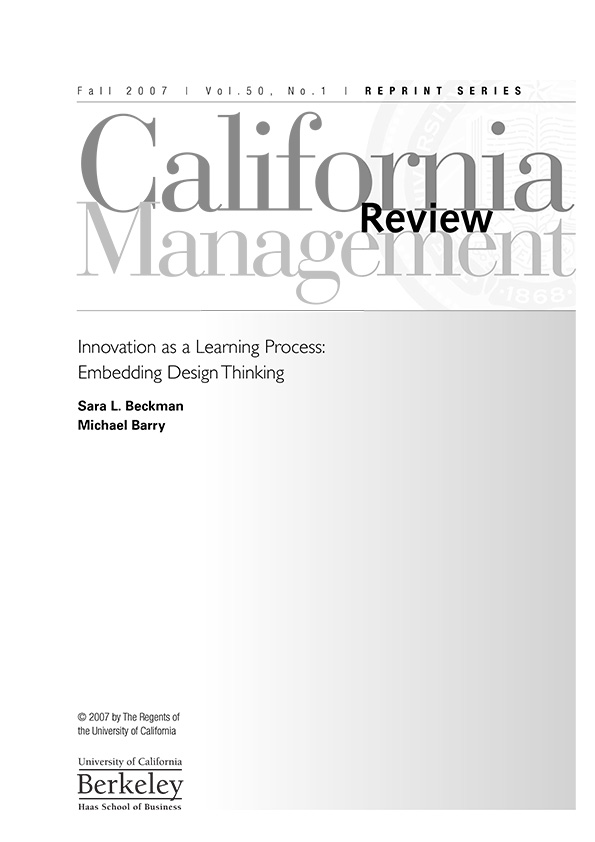Innovation as a learning process: Embedding design thinking
Beckman, S. L., & Barry, M. (2007)California management review, 50(1), 25-56.
Companies throughout the world are seeking competitive advan- tage by leading through innovation, some—such as Apple, Toyota, Google, and Starbucks—with great success. Many countries— such as Singapore, China, Korea, and India—are investing in education systems that emphasize leading through innovation, some by investing specifically in design schools or programs, and others by embedding innovative thinking throughout the curriculum. Business, engineering, and design schools around the U.S. are expanding their efforts to teach students how to innovate, often through multi-disciplinary classes that give students a full experience of the innovation process. However, what does leading through innovation really mean? What does it mean to be a leader, and what does it mean to engage in innovation? There is a vast literature on leadership covering a wide range of topics: the characteristics of a good leader, how leadership is best displayed in an orga- nization, leadership and vision, authority, leadership styles, and so on. There is also a growing body of literature on innovation and its various facets, much of it focused by application of the innovation process. Hundreds of publications describe the process of innovation for products—both hardware and software —and a growing number of publications focus on innovation in services. Further, there are dozens of books on innovation in building and workplace design. Here we examine a generic innovation process, grounded in models of how people learn, that can be applied across these sectors. It can be applied to the design and development of both hardware and software products, to the design of business models and services, to the design of organizations and how they work, and to the design of the buildings and spaces in which work takes place, or within which companies interact with their customers. The model has evolved through two streams of thought: design and learning.


